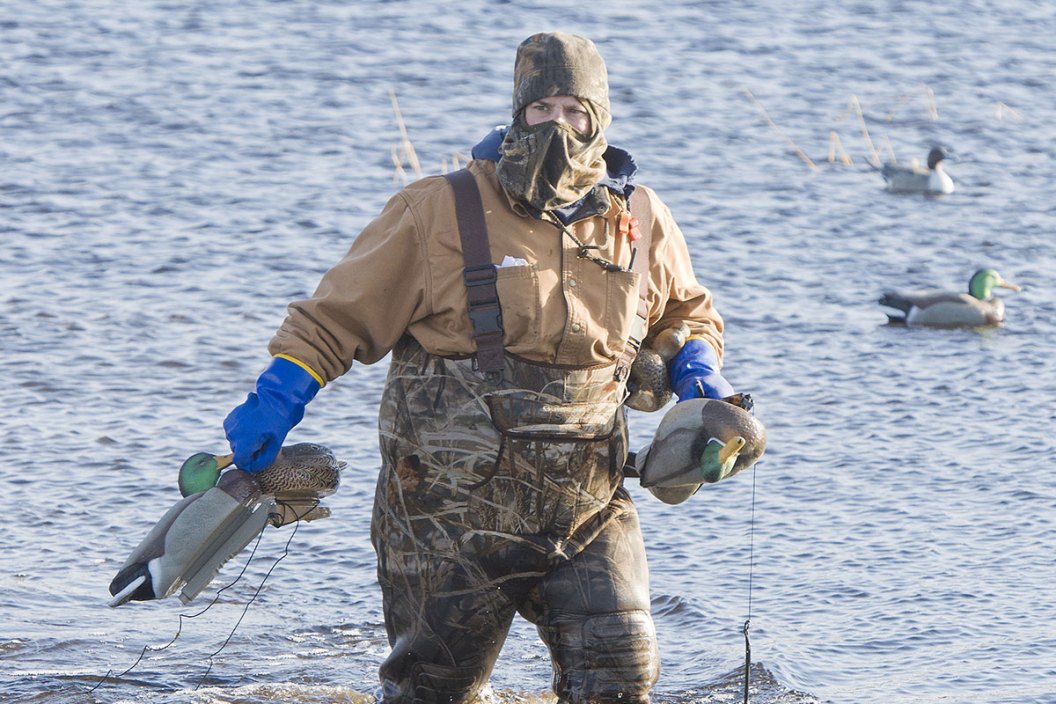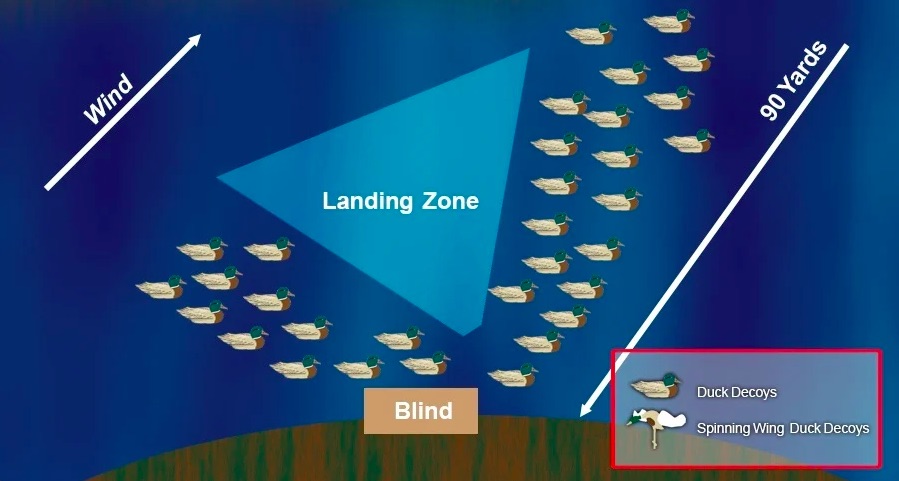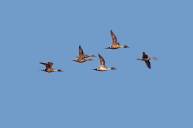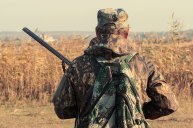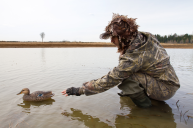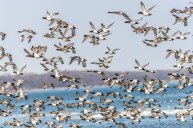These are four of the most commonly used and popular duck decoy spreads out there. Here's how they work.
While there are no guarantees for action when it comes to duck decoy spreads, it helps to have somewhere to start when setting your block in the water.
When you consider all the variables like wind speed, wind direction, and blind placement, it's easy to see how a duck hunter can have equal odds of having a great outing or be left holding an empty bag.
Change is the only constant in waterfowl hunting, and that should be used in a duck hunting spread as well. Mixing up your decoys by using different species will give them a new look that flyers headed your way haven't seen. Is it also necessary to position and set the spread in specific ways? The answer is a resounding yes.
It's always a great idea to add geese, other duck breeds, and especially confidence decoys into your spread, but the way that you set it up counts a great deal towards your success rate.
Waterfowlers know that birds get wary awful quickly once the season starts and they need every possible advantage that they can get. Decoy placement may not seem all that important, but every experienced duck hunter has seen the way wild birds flare. Patterns develop with certain places and situations, and that's how hunters come up with these spreads: they're a way to battle against that bad fortune.
Whether you're hunting puddle ducks or divers, you're going to need an advantage when it comes to waterfowl hunting. Late season mallards aren't easy to fool, and it's not always a sure thing to have young birds like wood ducks and teal dumping into your set early, but these spreads might just help to make the difference.
The Fishhook
Also known as the J-hook, this spread might be one of the most well known among waterfowl hunters especially those that set up over over bigger waters to target diving ducks.
This spread gets the attention of canvasbacks and bluebills like no other, and when the wind is played correctly it will have them dumping right into your best kill zone.
The bend of the "J" is always set just upwind of the blind, usually about 20 yards. Inside the bend, we would use up to 50 individual and line-rigged bluebill decoys to simulate a large group feeding, particularly drakes. Passing birds see the predominantly white rigs, follow the outside of the tail upwind, and focus in on the feeding frenzy.
In other words, they're so engaged with the visual format of the spread that they won't know what hit them.
Field Spread
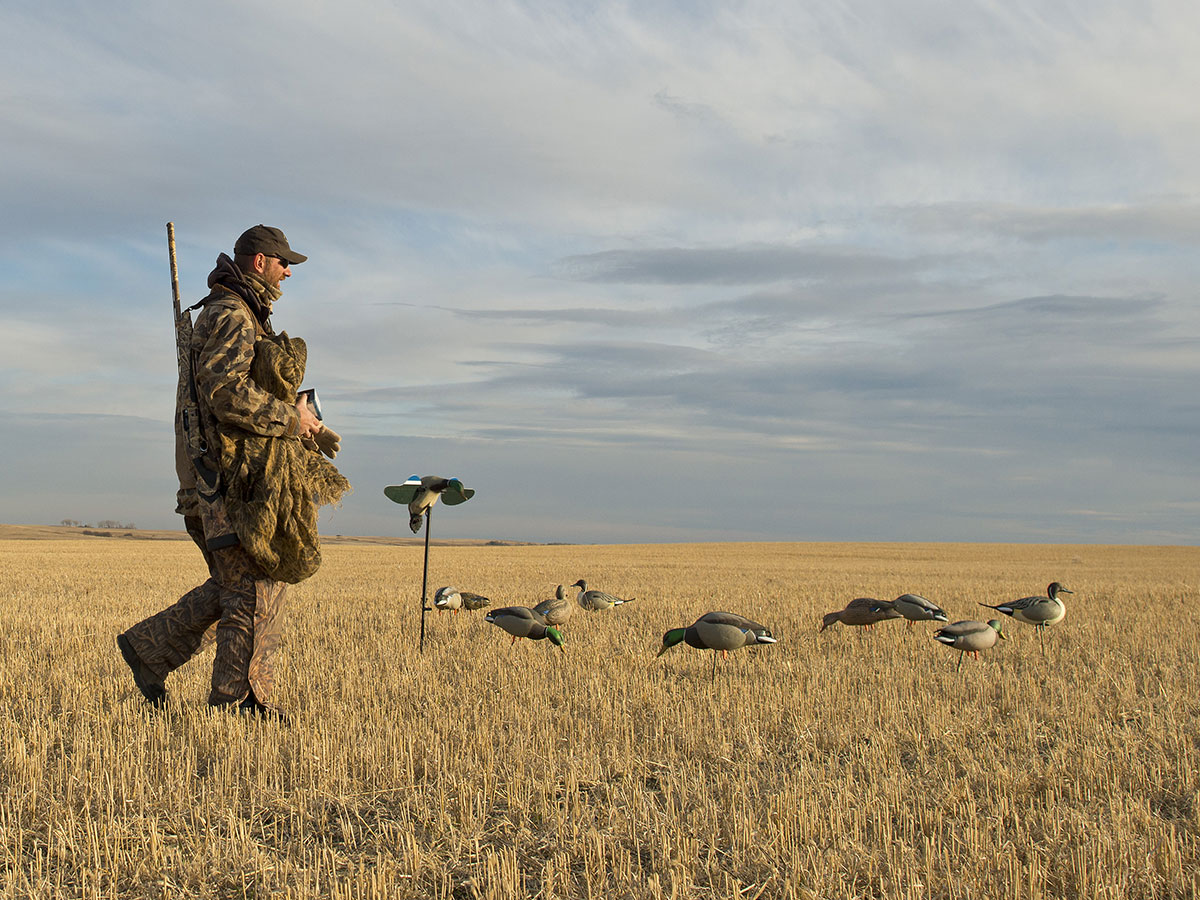
Field spreads usually combine plenty of duck and goose decoys of every variety. Depending on your location these can include Canada goose decoys, snow goose decoys or flags, plenty of mallard decoys, and a few other personal choices of puddle ducks. It helps if they're ducks that naturally fly through the area, but it's a misconception that you must have decoys that match the exact species you're targeting.
The blind location is generally at one end of the spread facing away from the wind so that waterfowl will land looking right at them. That means concealment is a major key here. Set the decoys out in four diamond patterns of similar sizes, one on each side of the bind and two in the middle, roughly back to back.
The landing zone will be in the crux of the diamonds on each side, making this a great place for spinners or other motion decoys.
The total number of decoys is always a big key for decoying late-season birds in fields, and since you'll have help and it's not on the water, you should pretty much be able to set everything you've got. THe more the merrier, I always say.
The Horseshoe
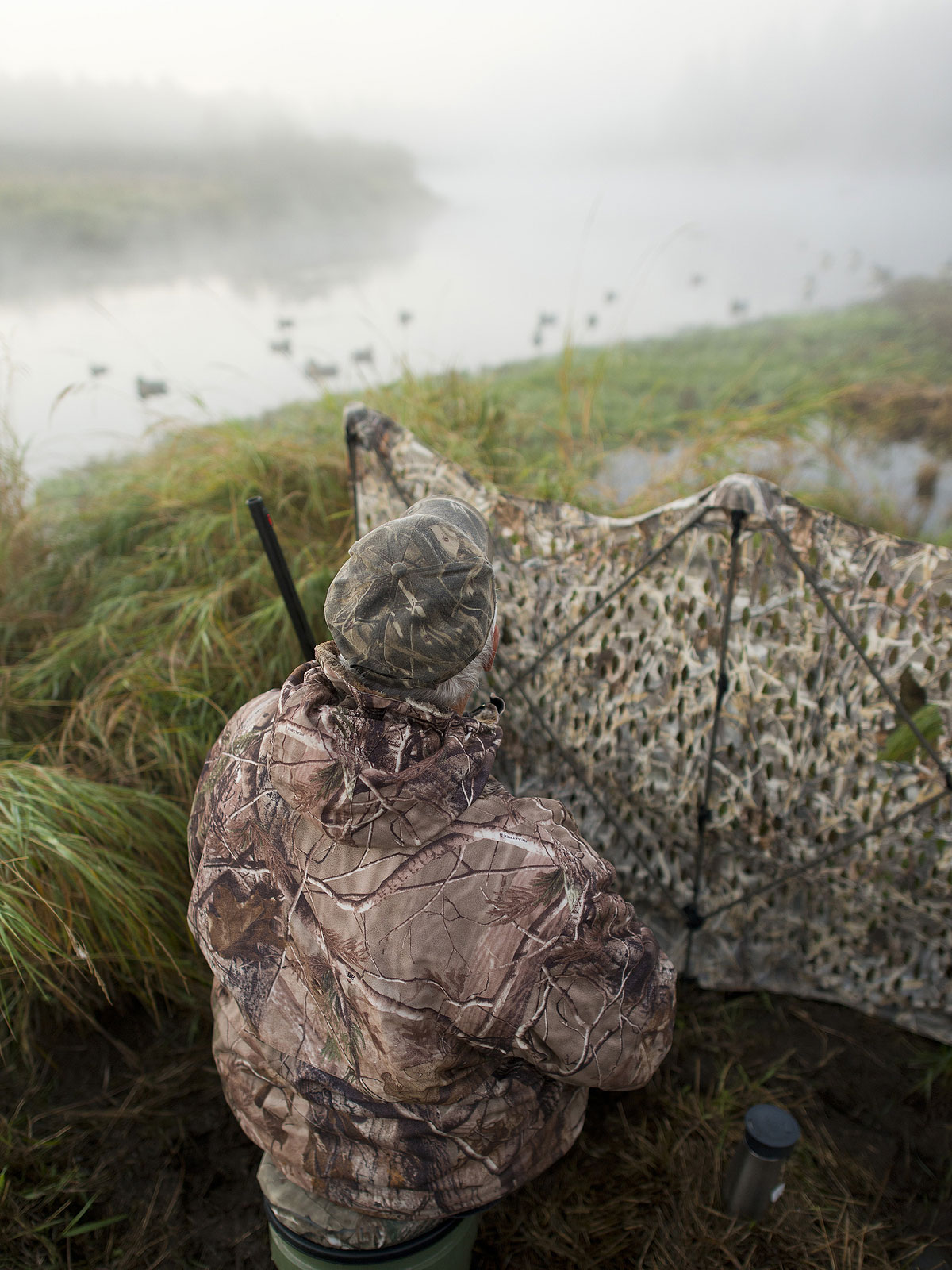
Sometimes simply referred to as the U, this rig gets the attention of puddle ducks as well as divers. This rig plays on a wind that is usually at the hunter's back, or a wind that you feel will change.
Incoming birds like divers will shoot for the empty water straight in front of you just like dabbling ducks, but the puddle ducks will give both sides of the blind individual opportunities to shoot as they sometimes like to skirt the center and land on the outskirts first.
Basically speaking, define your target landing zone and begin to spread your block out around it from left to right with the furthest decoys at about 35-40 yards around the horseshoe, and the closest right in front of you at 10-15 yards. There should be some motion in your spread in the set nearest to the blind along with some confidence decoys to give wary ducks something to keep their attention away from the hunters.
The X Technique
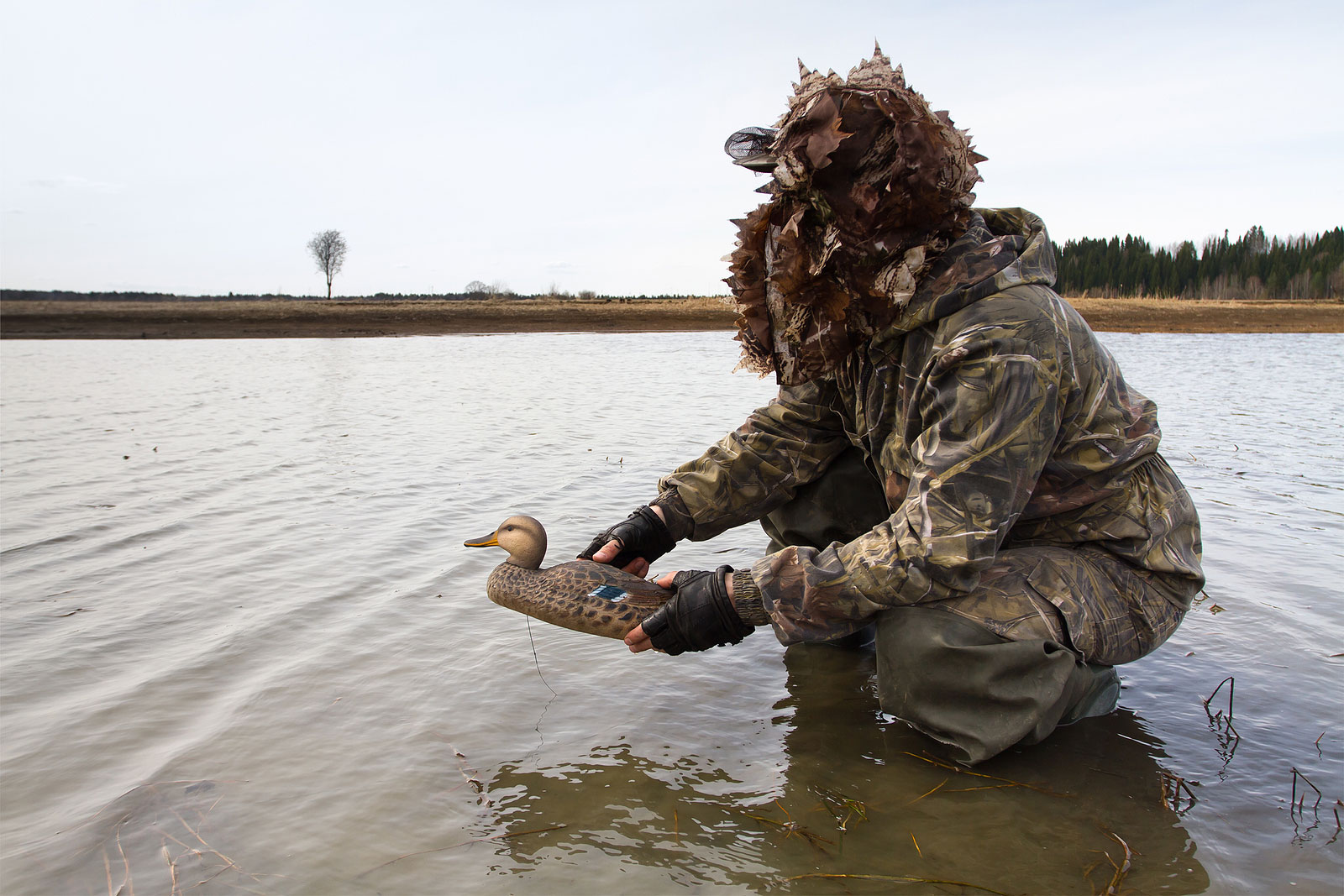
This spread can sometimes be referred to as the double O as well, depending on how many landing zones you want. Here is where you place your blind roughly in the middle of everything and begin setting your decoys in an "X" shape with the cross of the X approximately where you are sitting. This is not so much wind direction related, as it is making a larger area of possible landing spots for your quarry.
This works well for late-season puddlers, especially when the rig consists of several different species, along with lots of hen mallards and greenheads. The X pattern will give you four distinct landing zones including directly behind you, so you better make sure that you can shoot safely in that direction.
If you close the X on the sides of the blind by making it into a circle, you can avoid this problem and keep ducks landing more in front of you, hence the term double O.
Further Duck Decoy Thoughts
Other than flooded timber, we either hunt open water or fields. This includes river hunting, streams, ponds and potholes. When hunting early season, "green" birds, or home birds we usually don't have an issue getting them into shotgun range.
But it's when the hunting season stretches on, and birds pick up on the little things, that duck decoy spreads help tilt the scales.
For generations, duck hunters encountered all the same problems and responded by creating these various methods to visually convince birds it'd be a darn good idea to land right there.
It doesn't matter if it's small groups of mallard ducks in the timber or large groups of honkers in a field, or whether we use a dozen decoys or 60 on a series of long lines.
What matters is we're using smart decisions with the resources and tools we've got, and combining the right amounts and types of ingredients that cooking up a great hunt requires.
Sounds like a recipe for a limit, doesn't it?
Looking for a little more or even hot lunch for your hunting blind? Follow my webpage, or on Facebook and Twitter.
NEXT: THE 7 BEST DUCK CALLS FOR THE MARSH, FIELD, AND TIMBER
WATCH
